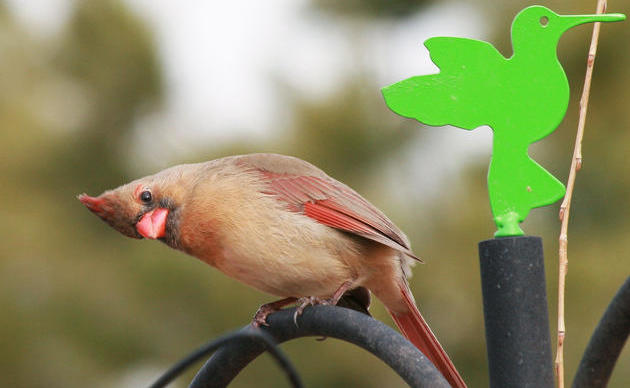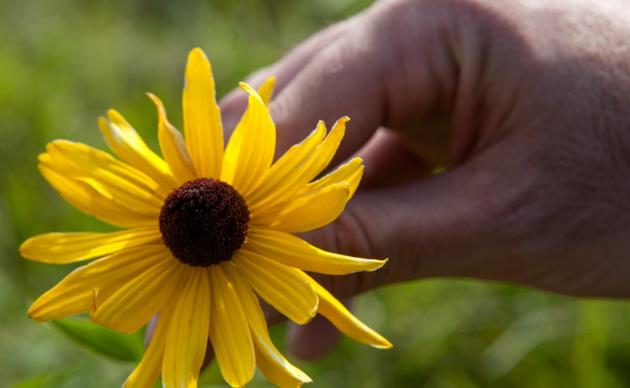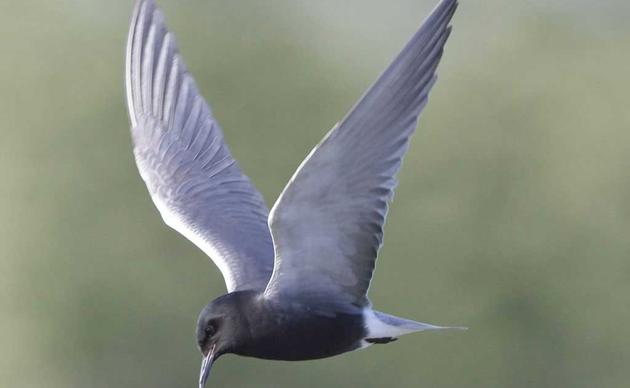Spring Migration is in full swing! While some birds begin their journey as early as mid February, migration in the Great Lakes region and Central Ohio where our nature centers are located runs between mid-April to mid-May.
At the Grange Insurance Audubon Center in Columbus Ohio, the Red-winged Blackbirds are back -- a sure sign of spring. The male Red-winged Blackbirds often arrive before other songbirds, even before the females, making their presence a particularly early indicator of spring's arrival.
Did you know there are five types of migrating birds? Larger birds often make the longest journeys:
- Permanent residents: Birds that stay in one area year-round like the Northern Cardinal, Blue Jays, and Tufted Titmouse.
- Altitudinal migrants: Birds that change altitude, not location, generally up or down a mountain such as Yellow-eyed Junco, and Mountain chickadee.
- Short-distance migrants: These can include the Red-winged Blackbird, American robin, Eastern phoebe, the Yellow-bellied Sapsucker and the Song sparrow.
- Medium-distance migrants: These are birds that migrate a few hundred miles. They might breed in the Northeastern U.S. and winter in the Southeast. Species include many types of warblers, the Western tanager and the Snow bunting.
- Long-distance migrants: These birds fly thousands of miles, often from the northern United States and Canada to wintering grounds in Central and South America, sometimes as far as 8,000 miles. The Ruby-throated hummingbird is considered a long-distance migrant undertaking a non-stop flight of up to 500 miles across the Gulf of Mexico during their spring and fall migrations.
Despite their epic journeys, much about how birds navigate migration-especially first-timers-remains a mystery. Researchers believe they rely on daylight length, the position of the sun and stars, smells, and even Earth’s magnetic field.
Unfortunately, climate change is disrupting these delicate migration patterns. When birds arrive too early or too late, they can miss critical food sources-just when they need energy most to breed and raise their young.
What Can You Do During Spring Migration?
There are many ways to help birds on their long jouneys such as reducing light pollution, make your windows bird-friendly, and support organizations like Audubon Great Lakes that work to protect bird habitats and migratory routes. Here is a list to help get you started!
- Donate to Audubon: Help secure the future for birds at risk from climate change, habitat loss, and other threats.
- Join an Audubon chapter: Audubon chapters create a culture of conservation in local communities through education and advocacy.
- Take action: Convey your concerns about issues affecting birds, wildlife, and their habitats, and help with conservation efforts.
- Spread the word: Advocate for policies and actions that protect birds and their habitats.
-
Turn off unnecessary lights: During migration periods (spring and fall), turn off exterior lights, decorative landscaping lights, and unnecessary lighting in lobbies or atriums.
- Participate in citizen science projects: Join projects like eBird, Project FeederWatch, or the Christmas Bird Count to record your bird observations.
-
Install bird-friendly solutions: Patterns on the outside surface of the glass are the best way to reduce bird-window collisions.
- Learn about migratory birds: Explore the Bird Migration Explorer and Important Bird Areas (IBAs) and learn about the birds that migrate through the Great Lakes region.
- Plant native plants: Create habitat with native plants that provide food and shelter for birds.





